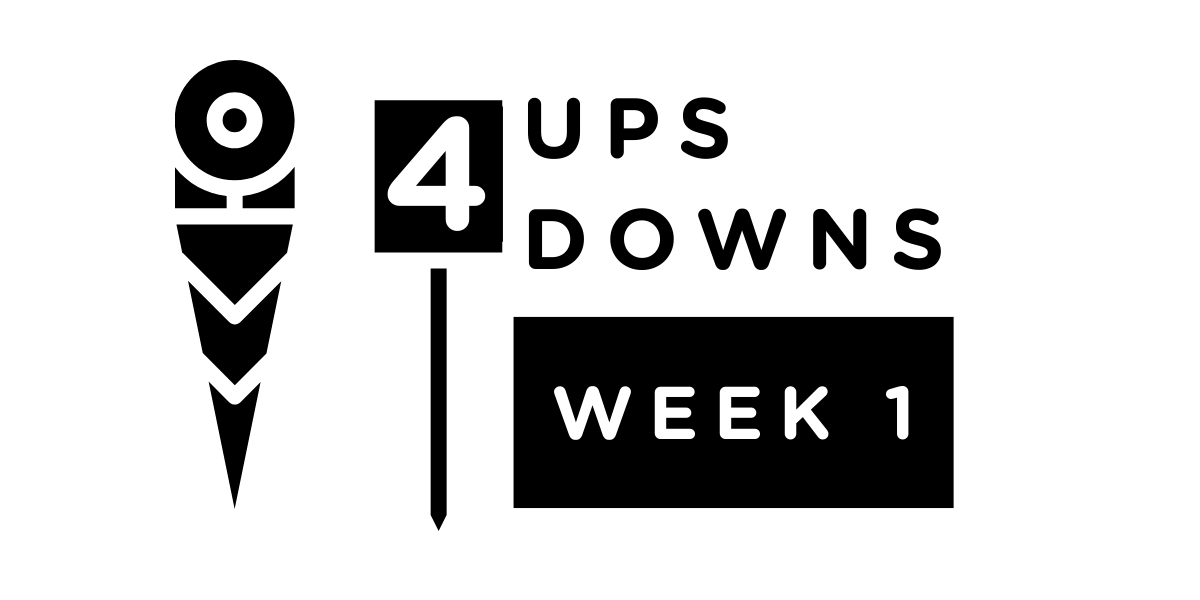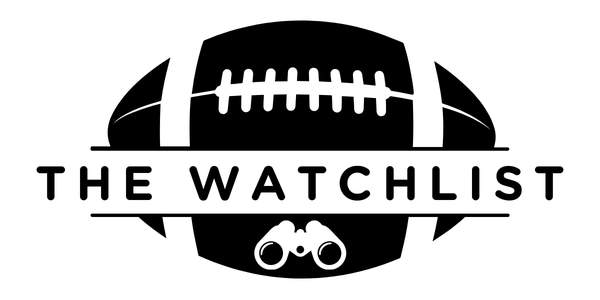Four Ups, Four Downs: Week 1

Welcome to Four Ups, Four Downs, our weekly column that's going to dive into the good (ups) and bad (downs) of the previous week's games. That could be a player, a specific play, a coaching decision, or something that lends itself to a bigger overall trend around the league.
If you followed my work previously, you might remember this as a late-in-the-week article. This year, we're going to make it an early-week article as a more immediate recap on Tuesdays as a replacement for 1st & 10, an extensive recap which used to come out on Monday morning.
With that out of the way, here's Four Ups, Four Downs for Week 1.
Up: Geno Smith off play-action
We got the first look at Geno Smith quarterbacking a Chip Kelly offense in the Raiders’ 20-12 win over the Patriots in Week 1. There was some mystery surrounding what exactly this would look like, especially in the passing game, and what we got was an encouraging sign for how this offense could perform for the rest of the season.
Las Vegas came out in 12 personnel on 35.5% of their snaps, the seventh-highest rate in the league per SumerSports, and averaged 0.39 EPA per play from those looks. Because of what Brock Bowers and Michael Mayer can do in the passing game, throwing from heavier personnel is something the Raiders can do at a high rate. Because of the bigger bodies, the Raiders could also — in theory — run the ball with bigger bodies on the field. Against New England, the run game wasn’t really working. Ashton Jeanty had a 26.3% rushing success rate, per Next Gen Stats, which ranked 31st out of 35 qualified running backs in Week 1.
Despite the struggles on the ground, the Raiders did not use that as a reason to abandon play-action. Smith used play-action on 32.5% of his dropbacks and went 6-of-11 for 119 yards with an interception, good for 0.23 EPA per play. Last year, Smith had an 18.3% play-action rate with the Seahawks, with a league-worst -0.16 EPA per dropback.
Using play-action didn’t completely isolate Smith from pressure (he was still pressured on six of his 13 dropbacks), but there were answers to get the ball out if needed. On the first play of the game, the Raiders did some stuff. Las Vegas came out in 12 personnel from pistol and motioned Mayer across the formation to leave Bowers as an isolated X to the right side. But then Jakobi Meyers motioned back to Bowers’s side, which froze defenders and created an opening for Bowers.
Later in the game, the Raiders again came out in 12 personnel from pistol, but this time Mayer lined up in the backfield next to Smith. Vegas ran the same concept with Bowers isolated and Meyers motion to him, but the Patriots had that covered. Mayer also snuck out to that side and with the New England defenders flowing with Bowers and Meyers, Mayer had room for a nice gain.
Down: Kansas City’s defensive back rotation
The Kansas City defense was a bit of a concern on Friday night against the Chargers. It’s not often a Steve Spagnuolo defense looks out of sorts, but the secondary routinely blew coverages and let Chargers receivers run wide open.
Let’s look at the touchdown to Keenan Allen. The Chiefs are trying to do a lot. Safety Bryan Cook runs up to the A-gap and then drops back deep into coverage as the single-high safety. Trent McDuffie sits in the flat on the outside to pick up Ladd McConkey from the slot, but Jaden Hicks tried to press McConkey off the line, only to turn around and chase Allen to the end zone. It’s chaos in a bad way.
One issue with the Chiefs’ secondary overall is how the players have been deployed. Since L’Jarius Sneed was traded to the Titans before the 2024 season, McDuffie has been playing more outside. In his best season, 2023, McDuffie played 49% of his snaps in the slot. He was one of the league’s best nickel defenders and moved around to play in the box and at the line of scrimmage. Last year, he played 79% of his snaps outside. While he was voted second-team All-Pro and 25th among cornerbacks in adjusted yards allowed per coverage snap (which adjusts for touchdowns and interceptions), he didn’t have the same impact on the outside.
Against the Chargers, McDuffie played 45 of his 65 snaps (69%) on the outside. Chamarri Conner played 30 of his 64 snaps in the slot and was charged with 2.44 adjusted yards allowed per coverage snap in the opener. This could change once Kristian Fulton is fully healthy and playing on the outside more — he only played 15 snaps in Week 1. McDuffie in the slot helps everything else out, especially now with Justin Reid gone in the middle of the defense. It’s not an ideal use of resources for a unit that has fewer of them to work with now.
Up: Tyler Warren and 13 personnel in Indy
Tyler Warren was a fun tight end prospect, partly because of how much he could do on the field. At Penn State, Warren lined up inline, in the slot, in the backfield, and took snaps as a wildcat. In his debut against the Dolphins, Warren spent 60% of his snaps inline, 24.5% in the slot, and 11.3% out wide with two snaps at quarterback on the way to seven catches on nine targets for 76 yards.
It wasn’t so much the movement all around the field, but the intention of getting Warren involved that was promising. Two of his best receptions came as a traditional tight end, tight but just off the line of scrimmage. Early in the first quarter, the Colts came out in a tight bunch from 13 personnel with Alec Piece isolated on the right. Before the snap, the Colts motioned Mo Alie-Cox across the formation and switched Jonathan Taylor to the left. With a route to the flat from Taylor and Andrew Olgetree deep, Warren had a space for a wheel route down the sideline.
On another play from 13 personnel late in the game, Warren was again tight off the line. With play-action toward Warren’s side, the tight end snuck out the opposite side into space. It could have been a play for little gain, but Warren shakes two Miami defenders to the ground and gains 15 yards.
The Colts used 13 personnel on eight plays and averaged with a 62.5% pass rate and averaged 0.43 EPA per play, per SumerSports. Last season, the Colts ran 35 plays from 13 personnel and averaged -0.53 EPA per play.

